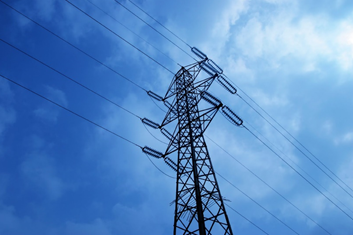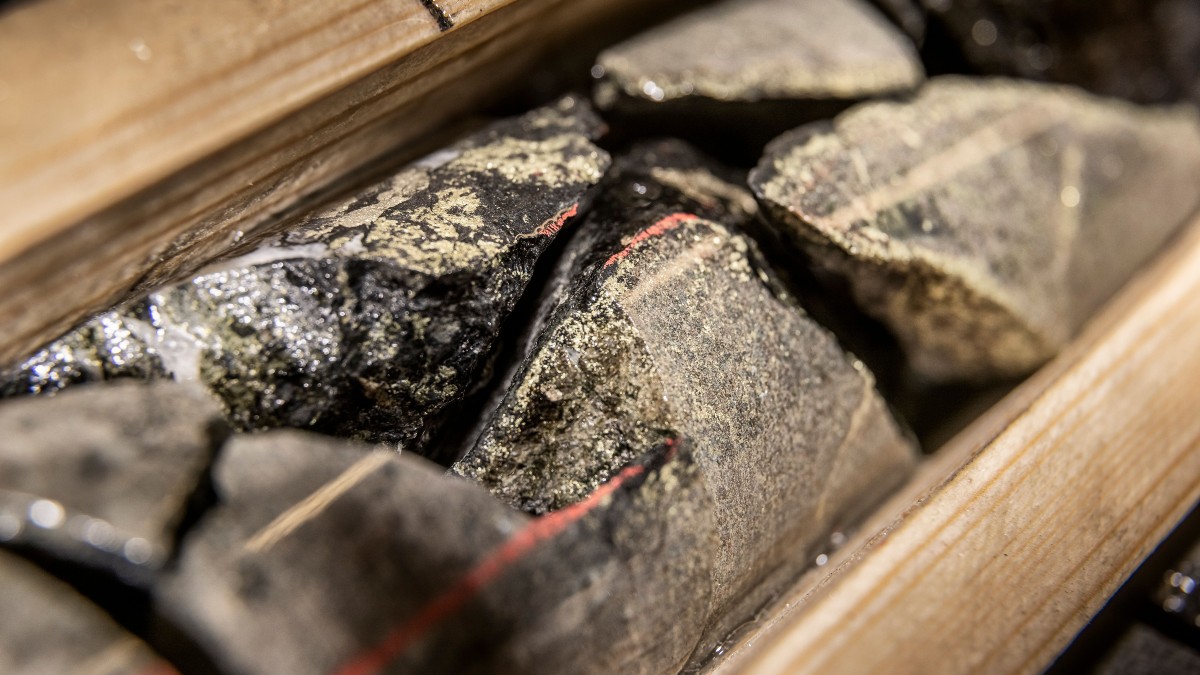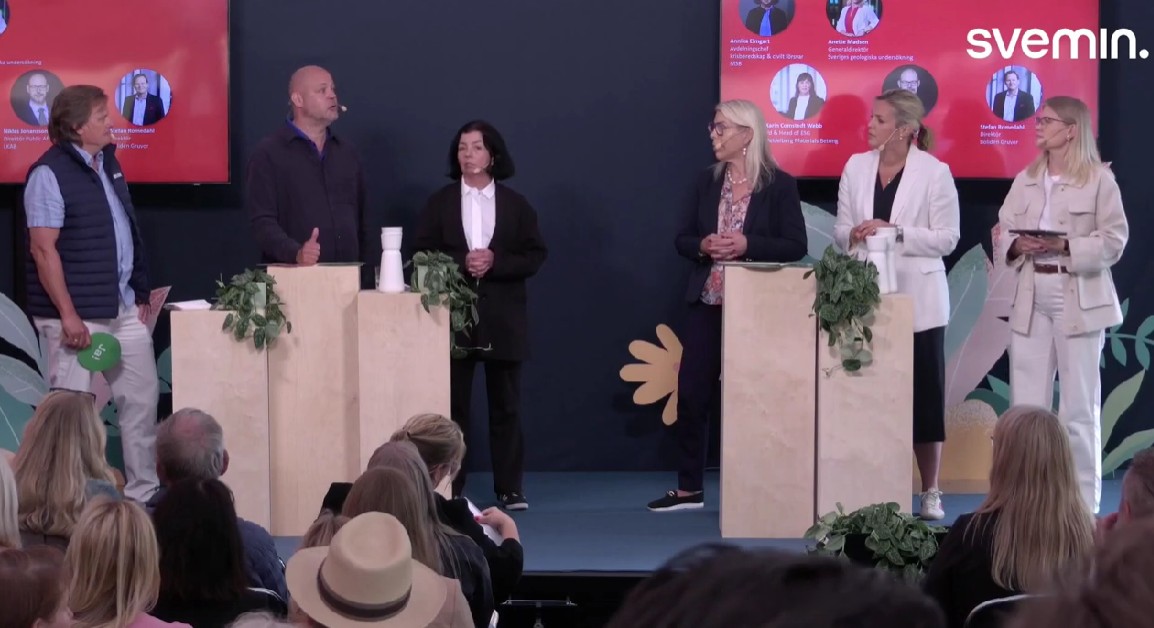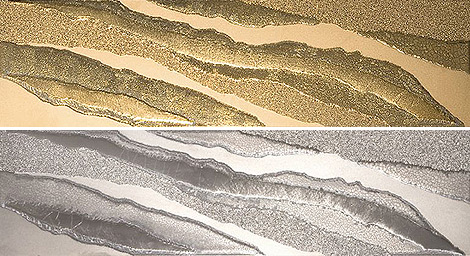Nyheter
David Hargreaves on Energy, week 51 2013

 Given we are in the grip of winter in the northern hemisphere, energy prices are not galloping north. Brent crude oil has far to go before WIM’s postulated $80/bbl. Uranium was moribund below $35/lb and thermal coal neither shaken nor stirred. The UK is at last warming to fracking and the International Energy Agency (IEA) blows hot and cold (mostly hot) on coal in its most recent report.
Given we are in the grip of winter in the northern hemisphere, energy prices are not galloping north. Brent crude oil has far to go before WIM’s postulated $80/bbl. Uranium was moribund below $35/lb and thermal coal neither shaken nor stirred. The UK is at last warming to fracking and the International Energy Agency (IEA) blows hot and cold (mostly hot) on coal in its most recent report.
Coal provides close on 30% of all the world’s primary energy needs, second only to oil and c.35%. So despite its environmental detractors, it is here to stay. Also, says the IEA, it is here to grow. As ever, it is the fault of the Chinese. Reasons for coal’s dominant position include: it is abundant and geopolitically secure and coal fired plants are easily integrated into existing power systems. So it will meet more of the projected energy-demand growth than either oil or gas. We read that:
Global Coal Consumption grew from 7.53bnt in 2011 to 7.70Bnt (+2.3%) in 2012. This was the third lowest growth on record in the past decade.
China posted its second lowest growth in the period (+4.7%) to an estimated 3.68bnt or 48% of world total. This dwarfs the demands of both Russia and the USA in met and thermal coal.
US Coal Demand fell 98Mt to c.822Mt. A mild winter, low gas prices and plant retirements were all cited. The country’s export capability increased accordingly. Demand also increased in OECD Europe (+17Mt) and OECD Asia and Oceania (+12Mt).
Global Coal Supply increased c.7.83Mt (+223Mt) mostly from China (+130Mt) and Indonesia (+82Mt) but declined strongly (-71Mt) in the USA.
Demand says the IEA, will grow at 2.3% per year through 2018, down on the actual of +3.4% per year in 2007-2012.
Coal Conversion Projects (eg to gas, fuel liquids) will continue apace, particularly in China. If this becomes prevalent, it will affect forecasts for natural oil, gas and shale gas projects. The demand from China will continue, fed in part by conversion.
Importantly, coal demand in the developed, ie OECD economies will not decline, but flatten. India’s position in the world coal market remains an enigma. It has huge reserves although of suspect quality whilst the dominant miner, Coal India Ltd (CIL), is arguably the world’s largest producer. Still the country is not only an importer but actively seeks overseas investments in the sector. It has a list of ‘captive’ mines, only allowed to sell into the controlled power station market, which does not take all their output but they are not allowed to sell on the open market.
WIM says: India’s aspirations to compete with China are self-defeating in all bar population, where its c.1.20bn people will over take China’s 1.3bn ere long. Otherwise, its minerals policies, including gold imports and reliance on foreign energy, are in a shambles. To compound this, the largely government owned CIL is eyeing five proposals to acquire assets in Indonesia. It is also sniffing around Mozambique’s Tete Province and South Africa’s Limpopo.
Malawi, the small, landlocked central African country, has a lone coal mine, Mchenga, in the north which is looking for a strategic partner to increase output. The coal is of relatively low industrial quality but has both local and export market potential.
One man’s corn…. The US has had a bumper corn harvest, reflected in low current prices. Increasingly, the crop is used to make ethanol which in turn is blended into biofuel to satisfy the green lobby. Then there are dried distillers grains, DDGs, also produced at ethanol plants, where profits, noted at up to $0.70-1.00 per gallon, are noted.
[hr]
About David Hargreaves
David Hargreaves is a mining engineer with over forty years of senior experience in the industry. After qualifying in coal mining he worked in the iron ore mines of Quebec and Northwest Ontario before diversifying into other bulk minerals including bauxite. He was Head of Research for stockbrokers James Capel in London from 1974 to 1977 and voted Mining Analyst of the year on three successive occasions.
Since forming his own metals broking and research company in 1977, he has successfully promoted and been a director of several public companies. He currently writes “The Week in Mining”, an incisive review of world mining events, for stockbrokers WH Ireland. David’s research pays particular attention to steel via the iron ore and coal supply industries. He is a Chartered Mining Engineer, Fellow of the Geological Society and the Institute of Mining, Minerals and Materials, and a Member of the Royal Institution. His textbook, “The World Index of Resources and Population” accurately predicted the exponential rise in demand for steel industry products.
Nyheter
USA ska införa 50 procent tull på koppar

USA:s president Donald Trump har precis meddelat att landet ska införa en tull på 50 procent på basmetallen koppar. Priset på råvarubörsen i USA stiger omgående med 10 procent.
USA har viss inhemsk produktion av koppar, men den inhemska efterfrågan överstiger produktionen. Därför måste landet importera koppar för att täcka behovet, särskilt för användning inom elnät, elektronik, byggindustri och fordonssektorn. De största exportörerna till USA är Chile, Kanada, Mexiko och Peru.
När tullar av denna typ införs uppstår prisskillnader i världen. Handlar man koppar på börsen är det därför viktigt att veta vilken börs man handlar på eller om man använder certifikat så är det viktigt att veta vilka underliggande värdepapper de följer.
Sedan är det som alltid med Trump, begreppet är som bekant TACO, Trump Always Chickens Out. Man ska alltså inte ta några definitiva stora beslut baserat på vad han säger. Saker och ting kan ändra sig från dag till dag.
Nyheter
Ryska staten siktar på att konfiskera en av landets största guldproducenter

En våg av panik sprider sig bland Moskvas elit sedan Vladimir Putins regim inlett en dramatisk offensiv för att beslagta tillgångarna hos Konstantin Strukov – en av Rysslands rikaste affärsmän och ägare till landets största guldgruvföretag, Yuzhuralzoloto. Åtgärden ses som ett tydligt tecken på hur långt Kreml är villigt att gå för att säkra ekonomiska resurser i takt med att kostnaderna för kriget i Ukraina stiger.
Strukovs förmögenhet, som uppskattas till över 3,5 miljarder dollar, byggdes upp under decennier i nära relation med maktens centrum i Ryssland. Men den 5 juli stoppades hans privatjet från att lyfta mot Turkiet. Enligt flera ryska medier deltog den federala säkerhetstjänsten FSB i ingripandet, och Strukovs pass beslagtogs. Händelsen ska vara kopplad till en omfattande rättsprocess där åklagare kräver att hela hans företagsimperium förverkas – med hänvisning till påstådd korruption och användning av skalbolag och familjemedlemmar för att dölja tillgångar.
Företaget själva förnekar att något inträffat och kallar rapporteringen för desinformation. De hävdar att Strukov befann sig i Moskva hela tiden. Trots det bekräftar rättsdokument att både han och hans familj förbjudits att lämna landet, och att myndigheterna snabbt verkställt beslutet.
Det som nu sker är en del av ett större mönster i ett Ryssland präglat av krigsekonomi: staten tar tillbaka kontrollen över strategiska sektorer som guld, olja och försvarsindustri – industrier som nu allt mer mobiliseras för att finansiera och stödja krigsinsatsen. Intressant nog handlar det inte om att Strukov ska ha varit illojal mot regimen – tvärtom har han varit en lojal allierad, med politiska uppdrag knutna till Putins parti. Men lojalitet räcker inte längre som skydd.
Medan tidigare utrensningar ofta riktade sig mot krigskritiker eller de som flydde landet, drivs dagens tillgångsövertaganden av något mer fundamentalt: ekonomisk nöd. De växande sanktionerna har nästan helt strypt inflödet av utländskt kapital. Statens oljeintäkter minskar och budgetunderskotten växer. Putins lösning är att vända sig inåt – till de oligarker han själv lyfte fram – för att fylla statskassan.
Det här är inte ett enskilt fall. På senare tid har flera framstående affärspersoner hamnat i plötsliga rättsliga tvister, omkommit under mystiska omständigheter eller sett sina bolag tas över av staten. Den oskrivna överenskommelsen som länge gällde i Putins Ryssland – rikedom i utbyte mot lojalitet – håller på att kollapsa.
Den 8 juli väntar en rättsförhandling som kan avgöra framtiden för Strukovs affärsimperium. Men budskapet till Rysslands näringslivselit är redan tydligt: ingen är för rik, för lojal eller för nära den politiska makten för att gå säker. I ett Ryssland där kriget kräver allt större uppoffringar riskerar oligarker att snabbt förvandlas till måltavlor.
Nyheter
Hur säkrar vi Sveriges tillgång till kritiska metaller och mineral i en ny geopolitisk verklighet?

När världsläget förändras ställs Europas beroende av metaller och mineral på sin spets. Geopolitiska spänningar, handelskonflikter och ett mer oförutsägbart USA gör att vi inte längre kan ta gamla allianser för givna. Samtidigt kontrolleras en stor del av de kritiska råvarorna vi är beroende av av andra makter – inte minst Kina. Vad händer med Sveriges industriella förmåga i ett läge där importen stryps? Hur påverkas försvarsindustrin av Kinas exportrestriktioner? Är EU:s nya råvarupolitik tillräcklig för att minska sårbarheten – eller krävs ytterligare statliga insatser och beredskapslagring? Svemin anordnade den 25 juni ett seminarium som bestod av bestod av deltagare från myndigheter, politik och industri. Man diskuterar Sveriges och EU:s strategiska vägval i en ny global verklighet – och vad som krävs för att säkra tillgången till metaller när vi behöver dem som mest.
-

 Nyheter4 veckor sedan
Nyheter4 veckor sedanUppgången i oljepriset planade ut under helgen
-

 Nyheter3 veckor sedan
Nyheter3 veckor sedanMahvie Minerals växlar spår – satsar fullt ut på guld
-

 Nyheter4 veckor sedan
Nyheter4 veckor sedanLåga elpriser i sommar – men mellersta Sverige får en ökning
-

 Nyheter2 veckor sedan
Nyheter2 veckor sedanOljan, guldet och marknadens oroande tystnad
-

 Analys4 veckor sedan
Analys4 veckor sedanVery relaxed at USD 75/b. Risk barometer will likely fluctuate to higher levels with Brent into the 80ies or higher coming 2-3 weeks
-

 Nyheter2 veckor sedan
Nyheter2 veckor sedanJonas Lindvall är tillbaka med ett nytt oljebolag, Perthro, som ska börsnoteras
-

 Analys3 veckor sedan
Analys3 veckor sedanA muted price reaction. Market looks relaxed, but it is still on edge waiting for what Iran will do
-

 Nyheter2 veckor sedan
Nyheter2 veckor sedanDomstolen ger klartecken till Lappland Guldprospektering
















